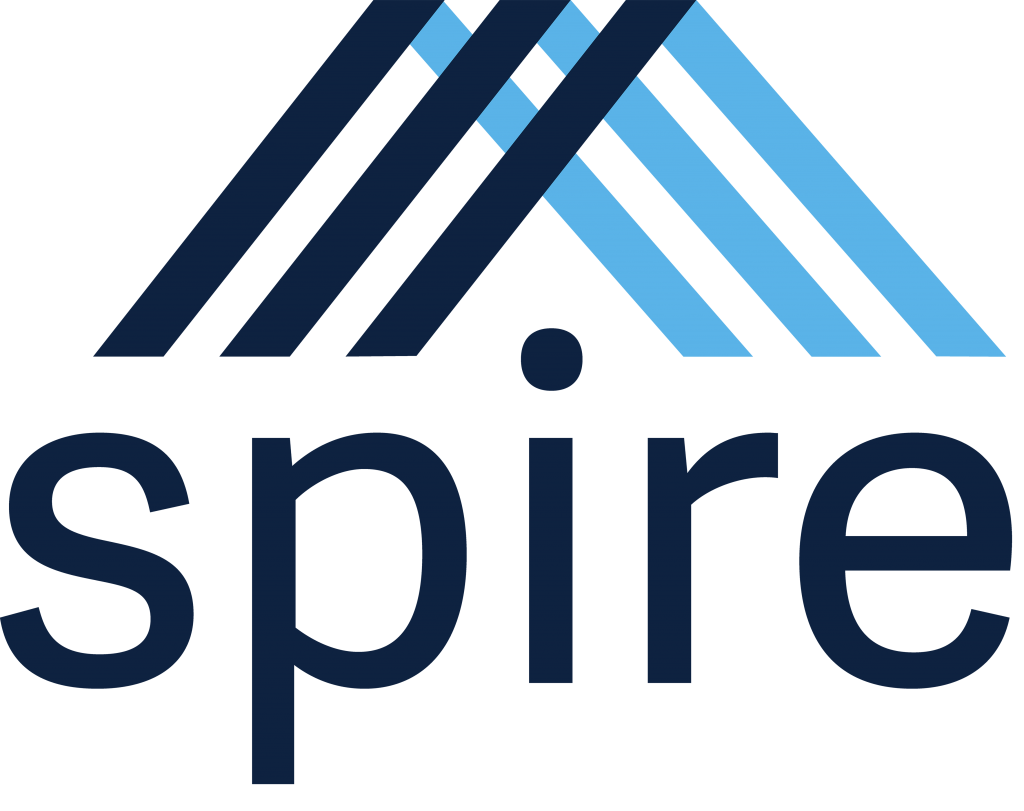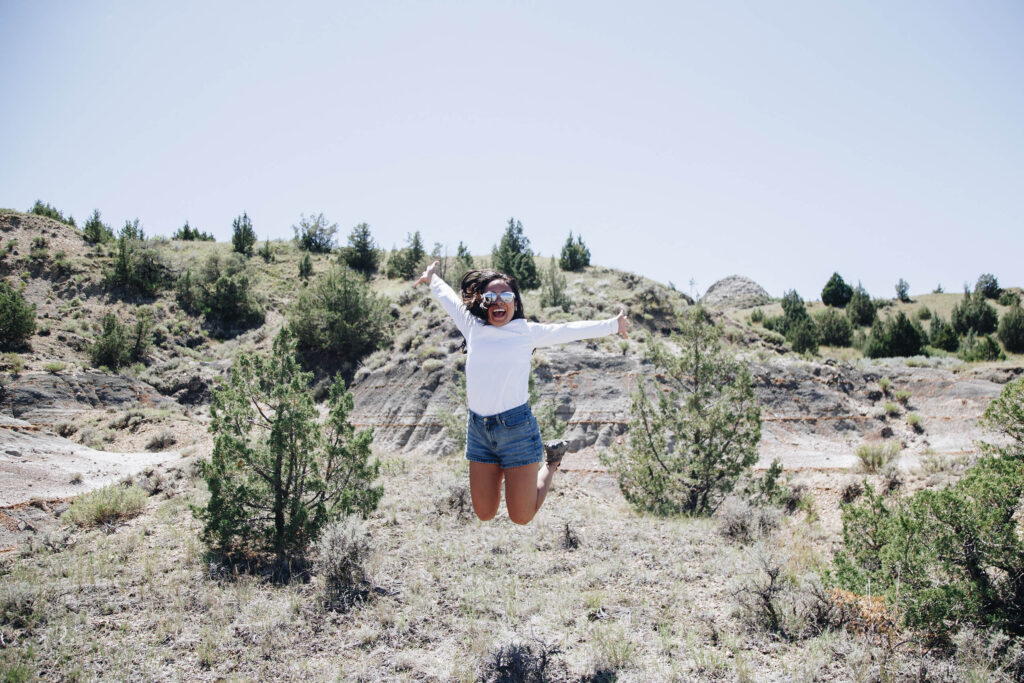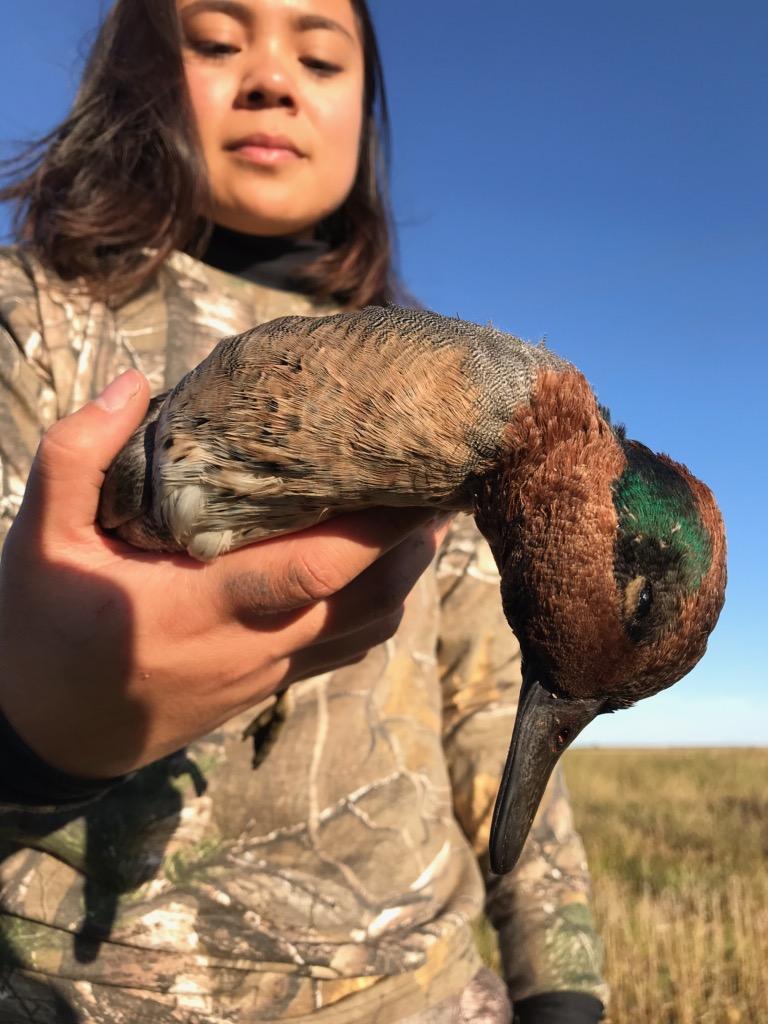Storytelling Our Way In and Through Resilience
By Michelle de Leon
This material is based upon work supported by the National Science Foundation under Grant No. 1828466.
With my car packed full in 2020, I drove over 2,000 miles to start graduate school in Maine. Orono would be my 10th address in five years, and picking up and moving to a new place didn’t faze me. Yet, feeling isolated with social distancing and adjusting to a rigorous program put me between a rock and a hard place: I have survived tough times before, though how does a person learn from her past when the present seems so unique? I needed help connecting with others and myself so I could adapt to whatever my new normal would become.
My graduate school training has since gifted me a language of resilience: I am learning to articulate what coping looks like, how to embrace uncertainty, and how to remain flexible. Resilience thinking holds that individuals, communities, and even larger regions can anticipate change and bounce back after stress, say a natural disaster or a traumatic event. After bouncing back, we are ideally better prepared to anticipate and cope through cycles of change. Relative to what we saw before the stress, bouncing back can look the same, like an adapted approach, or a transformation to something very different.
I use storytelling to help me manage change and shape how I bounce back. By hearing the stories of my peers at school, in the local community, and from strangers on social media, I have connected with others and remembered my own resilience. Each person’s story comes from a unique perspective, and different perspectives provide insight on how to solve messy issues that we face personally or collectively. Bearing witness to stories by others and myself fosters my ability to learn from strikingly different circumstances. There is no one-size-fits-all approach to addressing the most complicated situations, yet we can take what works for us and leave the rest. My studying resilience has shed light on the many ways I experience it, and it also shows me that storytelling can support the ability to bounce back in many different circumstances. My hope is that by sharing my story with you, you will see resilience as more than a buzzword and appreciate it as something that fits the complicated circumstances in and around you.
Studying resilience
My formal study of resilience began in 2020 when I enrolled as a graduate student at the University of Maine, though I’ve come to see how I’ve been studying it for much longer than that. With an academic and professional background rooted in environmental sciences, I often find myself at the intersection of social, environmental, and community issues. My academic, government, and non-profit experiences have shown me that sometimes, as scientists and practitioners, we use different words to describe the same phenomena. Sometimes we practice resilience without using the word resilience.
Yoga has helped me navigate this complexity around resilience. While many consider yoga to be a physical exercise, my roles as a yoga instructor and student demonstrate that yoga engages physical, mental, emotional, and spiritual dimensions of our life. The Yoga Sutras of Patanjali describes 10 ethics that are well-accepted to be the foundation of yoga, and the ethics of self-study and surrender are two that speak directly to resilience thinking. For one, self-study challenges yoga practitioners to gain awareness of one’s own thoughts, words, and behavior and to discern how one harms or serves the Universe in and around them. Similarly, resilience thinking requires assessing current conditions and its characteristics in order to prepare for uncertainty and change. Moreover, surrender complements self-study: this means letting go of our urges to control ourselves and our surroundings—and instead embracing uncertainty. Resilience thinking also demands researchers and practitioners to release the expectations of no change and instead accept the need to remain flexible and prepare for cycles of change.
The parallels between yoga and resilience thinking reflect how we manage, and persist through, change. Yoga, and particularly the ethics of self-study and surrender, can deepen conversations around resilience because when we attend to how we interact with ourselves, other individuals, and the world, we gain awareness and skills needed to bounce back. It offers the tools to slow down and listen to stories, allowing us to make way for human connection.
Experiencing resilience
Resilience thinking assumes there are systems, that is, parts are interrelated and interdependent in a system, and that the system is defined by its structure. Parts can involve human and non-human life and the processes they participate in, whereas the structure describes how the parts are organized, such as the many people and processes that constitute our healthcare system. One way to make sense of complex systems, whether they involve people, fish, or grasses, is to examine resilience at different levels, or scales, of issues. Examining scales helps researchers gain more insight from many situations, even when situations seem strikingly different. Scales range from micro to macro (yes – like economics!). At the micro scale, a resilience researcher may examine individual resilience, whereas at the macro scale, they may examine (ecological) landscape resilience. Your local community resilience is an example of what fills the in-between space called the meso scale. Let me walk you through some personal examples of how we can learn from strikingly different situations across scales.
Michelle enjoys the sunshine while hiking in western North Dakota. Spending time outdoors feels expansive inside, and connection to nature nourishes her. Image by Beth Hill.
*Editor’s Note: The following paragraph briefly describes an account of sexual abuse.
Individual resilience (micro scale). I learned what it means to be resilient in the face of change at 18 years young. During my first September on an unfamiliar campus, I survived sexual abuse. There is a psychological disorganization that occurs after trauma: I felt disconnected with my body, ashamed to have been violated while I was asleep, and inarticulate about my inner world. While I was unprepared for this trauma, I sought to adjust to a life after rape through different therapies. I tried cognitive behavioral therapy, eye movement desensitization and reprocessing, massage therapy, and yoga, to name a few, and the outdoors consistently provided me with the best treatment. Outdoors, I can take an honest account of myself and bear witness to how the natural world endures natural cycles of change and disasters. This (self-)study helps me surrender to trials and tribulations, trusting that I will bounce back to a version of myself who I am proud of.
Community resilience (meso scale). Knowing my own cycles of change excellently prepares me to lend an empathetic and analytical hand to others. As vice chair on the board of directors for a local farmers market, I participated in weekly contingency planning meetings in response to COVID-19 health and safety precautions. Would the market be closed for 2020? The market served as an incubator for entrepreneurs, and it increased access to healthful foods for community members, especially customers eligible for the Supplemental Nutrition Assistance Program (formerly called food stamps). Contingency planning was especially difficult as COVID-19 guidance for large gatherings and food vendors was evolving, and board members, vendors, and customers were experiencing the pandemic differently. It’s common for communities to have different people with different perspectives and experiences, and community issues don’t function in a vacuum: there are often other issues at play. In this case, local businesses, customers, our programming, and the pandemic were at a crossroads with our board of directors. Therefore, managing the market during the pandemic demanded leadership to listen to the many voices in our community and analytically devise safe approaches to both support local businesses and ensure access to healthful foods and local goods. While that market year looked different, it persisted through obstacles and still succeeded to serve its community.
Landscape resilience (macro scale). By now, you see similarities between individuals and communities managing change and bouncing back. Resilience thinking argues that non-human systems can do this too. Outside my window in North Dakota, the winds howled between 20 and 40 mph and the air temperature dropped from a high of 40 degrees F to a low of -3 degrees F. A 43-degree F differential makes my jaw drop, and I am even more impressed by the cows out at pasture, the wildlife roaming this winter, and the grasses that I trust will return next summer. The domestic and wild animals, fish, and flora have adapted to these prairie conditions. My understanding of them deepens as I witness cycles of change in myself, my community, and in the landscape itself. While I call the landscape resilient, it remains to be seen how the localized impacts of climate change affect how it bounces back. Conserving the landscape requires all-hands-on-deck, and it starts with observing the land and listening to all, including conflicting, natural resource users.
Telling stories about resilience
Now is a critical time to learn through seemingly different situations that we face alone or together, and storytelling is a tool for connecting and learning. We can leverage storytelling to gain insight between and across different scales of resilient systems. Storytelling connects us as humans and helps us learn from and with each other. We are hardwired for stories, and storytelling is how we share information in our day-to-day lives. Connecting through stories can remind us that we are not alone, encouraging us to surrender to life’s roller coaster.
Resilience researchers and practitioners recognize that respecting and utilizing different perspectives may provide more insight than one perspective could alone. Experiencing resilience through my career and yoga has led me to firmly hold that other people and institutions understand the world through their unique set of experiences. By reflecting on my own experiences and listening to others, I bring different perspectives together to help me better manage change. My background in science allows me to make sense of complex data about our dynamic world, while my yoga practice helps me prioritize human-nonhuman connection in how I study, and surrender to, change. Engaging both science and yoga prepares me to learn from and with different scales of issues.
Michelle reflects on her first blue-winged teal after a morning waterfowl hunt. Hunting is one of many ways she engages with, and in, the landscape.
My personal examples of resilience at different scales provide insight of how to manage change in various circumstances. While sharing my story about abuse and the outdoors keeps me on my life path, the personal vulnerability provides me with the skills to connect with the concerns of other individuals around me. My individual resilience guides me to listen to my community members when they explain the nuances of how COVID-19 protocols at market impact their business operations, change their educational programming, or influence whether vendors and customers will feel safe attending market or not. Storytelling is a way to engage with diverse perspectives and realize results in the community. Balancing multiple priorities in the community can inform how we balance multiple, and sometimes conflicting, priorities in the world around us. I work toward conserving natural resources by listening to scientific and non-scientific observations of the world, and while climate change is a global phenomenon with localized impacts, diverse stories teach me how to be a better steward of our shared earth.
At a time when we are all studying and experiencing resilience across different circumstances, storytelling can help us gather the pieces we need to bounce back. It helps us appreciate how others have managed change and embraced uncertainty. While some stories may seem irrelevant to our situation, storytelling gives us the space to take what we need and leave the rest. The next time you are asked to gain awareness of your situation and let go of your urge to control, how will you use storytelling to affect change?



